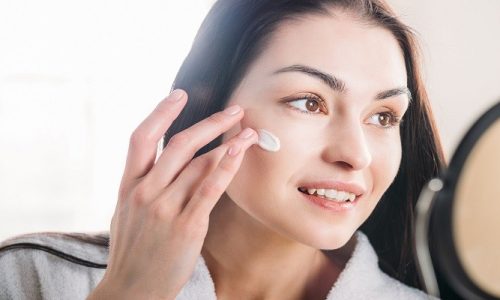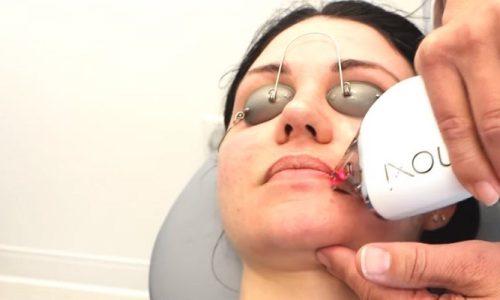Sallow skin is a condition where the skin appears yellowish or pale, often giving an unhealthy and tired look. This condition can affect anyone, regardless of age or skin type, and is usually a sign of underlying health issues or lifestyle factors. Understanding the causes of sallow skin is crucial for effective treatment and prevention. This article delves into the definition, symptoms, and various causes of sallow skin.
What Is Sallow Skin?
Sallow skin is characterized by a yellowish or pale complexion that lacks the natural vibrancy and healthy glow of normal skin. It often makes individuals look older and more fatigued than they actually are. The condition is not a natural part of aging but is usually indicative of other health or lifestyle issues. Sallow skin can be identified by its dull, uneven tone and the absence of the healthy, rosy color typically associated with good circulation and overall well-being.
Symptoms of Sallow Skin
The primary symptoms of sallow skin include:
- Yellowish or Pale Complexion: The skin takes on a yellow or pale tint, which is more noticeable in the face.
- Dullness: The skin loses its natural glow and appears lifeless.
- Uneven Skin Tone: The skin may have patches of discoloration and lack uniformity.
- Tired Appearance: The overall look of the skin is fatigued and aged, even if the individual feels well-rested.
Causes of Sallow Skin
Sallow skin can result from a variety of factors, both internal and external. Here are some of the most common causes:
1. Anemia
Anemia is one of the most common causes of sallow skin. It occurs when the red blood cells do not carry enough oxygen to the body’s tissues, leading to a pale or yellowish complexion. Anemia can be caused by iron deficiency, chronic diseases, or vitamin deficiencies, particularly in vitamin B12 and folic acid.
2. Vitamin Deficiency
A lack of essential vitamins and minerals can lead to sallow skin. Vitamins such as A, B, C, D, E, and K are crucial for maintaining healthy skin. Deficiencies in these vitamins can result in a dull, lifeless complexion. For instance, vitamin C is essential for collagen production, which keeps the skin firm and supple, while vitamin D is vital for skin cell growth and repair.
3. Dehydration
Dehydration is another significant cause of sallow skin. When the body lacks sufficient water, the skin becomes dry and loses its natural glow. Chronic dehydration can lead to a dull, sallow appearance. Drinking adequate water and avoiding excessive consumption of alcohol and caffeinated beverages can help maintain skin hydration.
4. Smoking
Smoking is detrimental to skin health. The chemicals in cigarettes reduce blood flow to the skin, depriving it of oxygen and essential nutrients. This leads to a decrease in collagen production, causing the skin to become dry, wrinkled, and sallow over time.
5. Poor Diet
A diet lacking in essential nutrients can contribute to sallow skin. Consuming a balanced diet rich in fruits, vegetables, lean proteins, and healthy fats is crucial for maintaining healthy skin. Foods high in antioxidants, such as berries and leafy greens, can help combat oxidative stress and improve skin health.
6. Lack of Sleep
Consistent sleep deprivation can lead to sallow skin. During sleep, the body repairs and regenerates skin cells. Lack of sleep disrupts this process, leading to a dull and tired appearance. Ensuring 7-9 hours of quality sleep each night is essential for maintaining healthy skin.
7. Stress
Chronic stress can take a toll on the skin. High levels of cortisol, the stress hormone, can lead to various skin issues, including sallow skin. Stress management techniques such as meditation, exercise, and spending time with loved ones can help reduce stress levels and improve skin health.
8. Poor Skin Care
Neglecting proper skin care can result in sallow skin. Regular cleansing, moisturizing, and exfoliating are essential for maintaining healthy skin. Using products suitable for your skin type and protecting your skin from sun damage with sunscreen can prevent sallow skin.
9. Environmental Factors
Exposure to pollution and harsh environmental conditions can damage the skin and lead to a sallow complexion. Pollutants can cause oxidative stress, which damages skin cells and leads to premature aging. Protecting your skin from environmental damage by using antioxidants and maintaining a proper skin care routine can help.
How to Prevent and Treat Sallow Skin?
Preventing and treating sallow skin involves addressing the underlying causes and adopting healthy lifestyle habits. Here are some tips:
- Stay Hydrated: Drink at least 8-9 glasses of water daily to keep your skin hydrated.
- Quit Smoking: Avoid smoking to improve blood flow and oxygen supply to the skin.
- Eat a Balanced Diet: Include a variety of nutrient-rich foods in your diet to ensure your skin gets the vitamins and minerals it needs.
- Get Enough Sleep: Aim for 7-9 hours of quality sleep each night to allow your skin to repair and regenerate.
- Manage Stress: Practice stress-reducing activities such as meditation, exercise, and spending time with loved ones.
- Follow a Proper Skin Care Routine: Cleanse, moisturize, and exfoliate regularly. Use sunscreen to protect your skin from sun damage.
- Consult a Doctor: If you suspect an underlying health condition, such as anemia or a vitamin deficiency, consult a healthcare professional for proper diagnosis and treatment.
Conclusion
Sallow skin is a condition that can significantly impact one’s appearance and self-esteem. Understanding the causes and taking proactive steps to address them can help restore your skin’s natural glow and vitality. By maintaining a healthy lifestyle, following a proper skincare routine, and addressing any underlying health issues, you can prevent and treat sallow skin effectively.
FAQs
What is a sallow skin appearance?
Sallow skin refers to a complexion that appears yellowish or pale, lacking the healthy radiance typically associated with well-nourished skin. This condition is often characterized by a dull, lifeless look and can be a sign of underlying health issues or poor lifestyle habits.
What are the features of sallow skin?
The features of sallow skin include a yellow or brown tint, dullness, and an uneven skin tone. It often appears dry, flaky and lacks the bright sheen of healthy skin. These changes are most noticeable on the face but can affect other parts of the body as well.
How do you get sallow skin?
Sallow skin can result from various factors, including anemia, vitamin deficiencies, chronic stress, lack of sleep, smoking, and poor diet. Environmental factors like prolonged sun exposure and pollution can also contribute to the condition. Additionally, poor skincare habits can exacerbate the issue.
What are the symptoms of sallow skin?
Symptoms of sallow skin include a yellow or brownish tint, a dull and lifeless complexion, and an uneven skin tone. The skin may also appear dry and flaky, and these changes are often accompanied by a tired, worn-down appearance.
How can sallow skin be prevented?
Preventing sallow skin involves maintaining a healthy lifestyle, including a balanced diet rich in essential vitamins, adequate hydration, and sufficient sleep. Quitting smoking, managing stress, and following a proper skincare routine with cleansing, moisturizing, and sun protection are also crucial steps.







